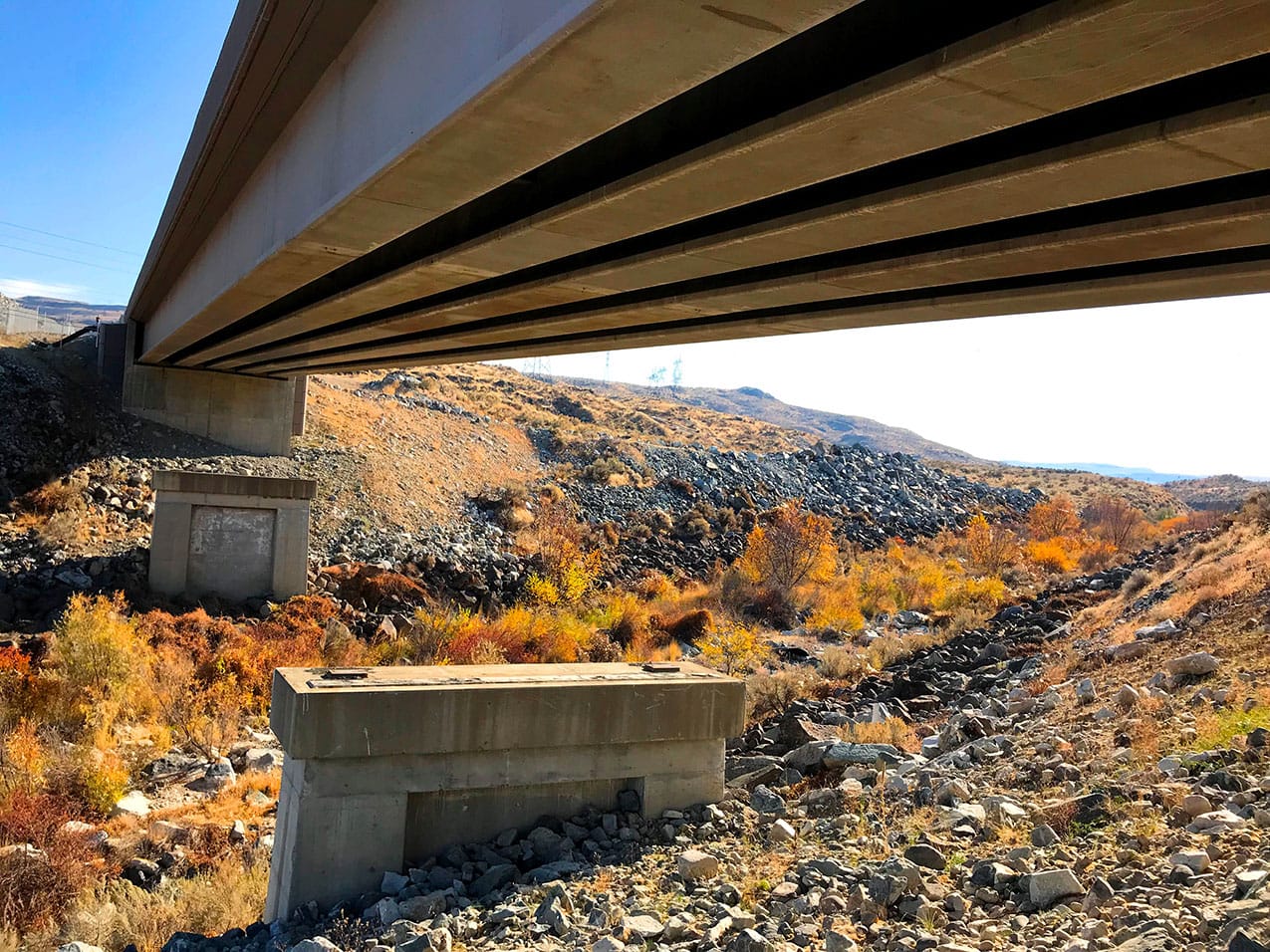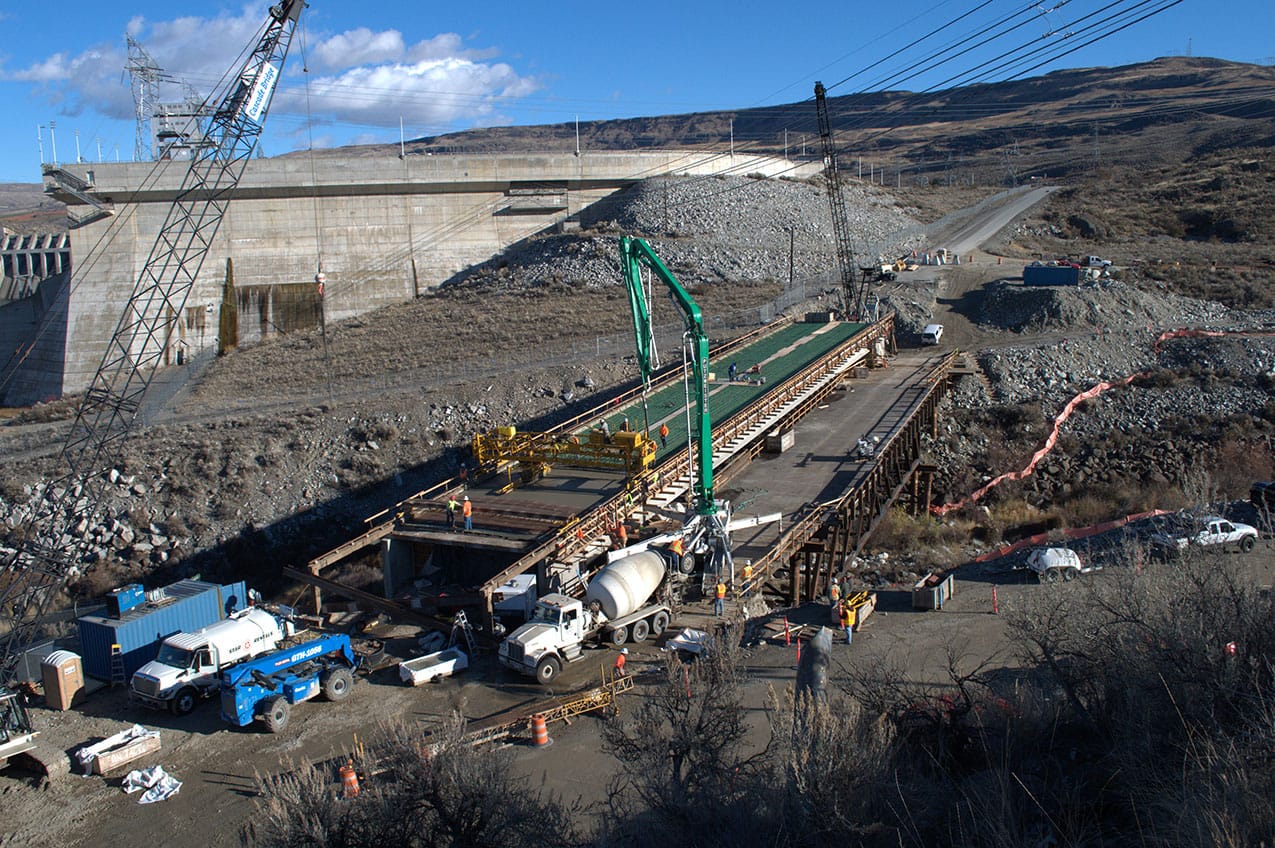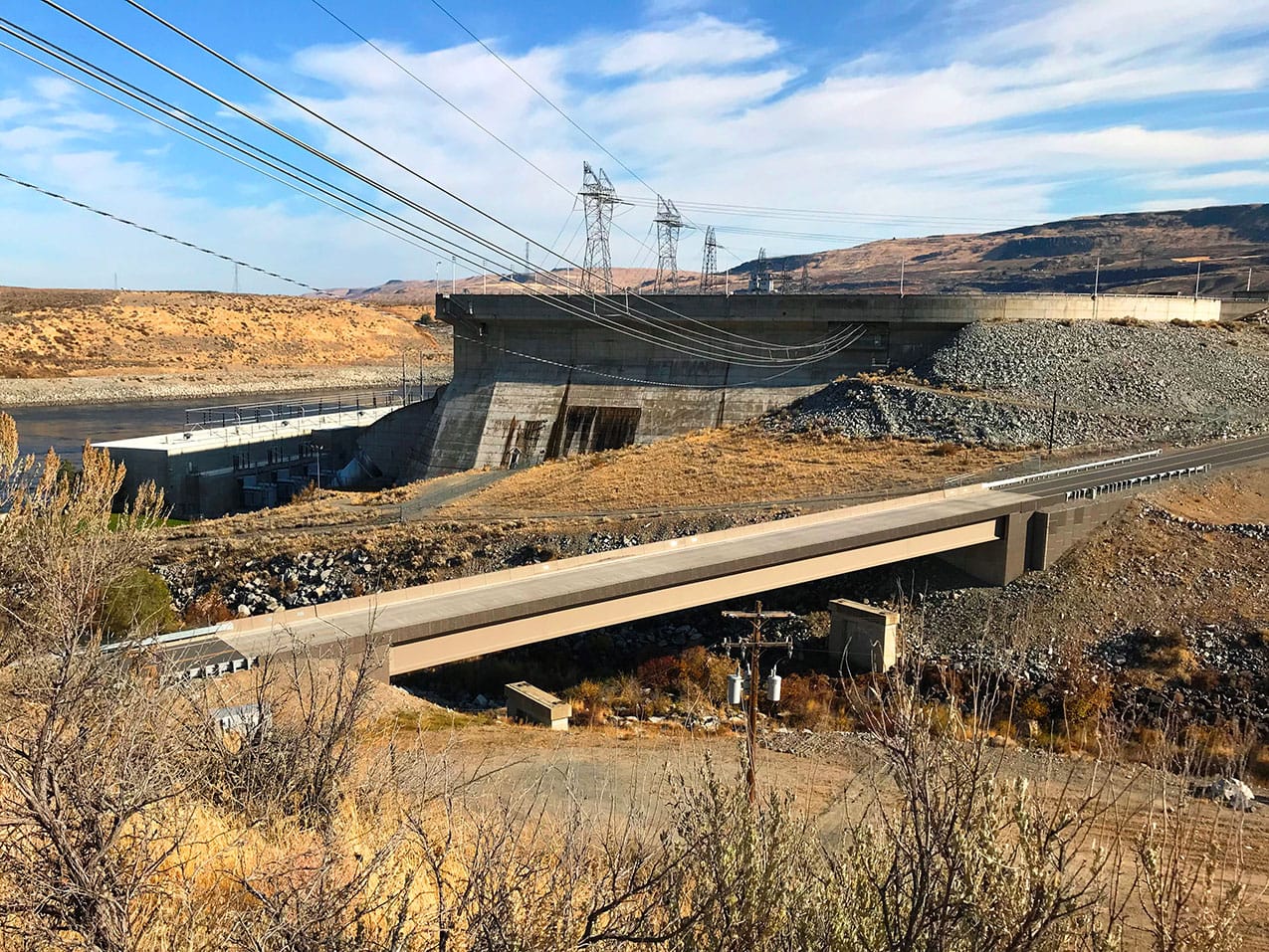


CHIEF JOSEPH DAM BRIDGE
Bridgeport in Douglas County, WA
PROJECT DETAILS
- Design Criteria:309-foot-long, single-span bridge comprising a single post-tensioned, 240-foot-long span and a 69-foot earth-filled approach. A cast-in-place deck with epoxy-coated reinforcing bar was used for the driving surface.
- Owner:Douglas County, Waterville, WA
- Designer:KPFF Consulting Engineers, Seattle, WA
- Contractor:Cascade Bridge LLC, Vancouver, WA
- Precaster:Concrete Technology Corp., Tacoma, WA
The Chief Joseph Dam Bridge in Bridgeport, Douglas County, Washington, featured unique attributes that made it a local landmark that was added to the National Register of Historical Places. But when it became too deteriorated to remain in service, officials replaced it with a then-record-setting design consisting of a single span of precast concrete, post-tensioned spliced girders with a cast-in-place concrete deck reinforced with epoxy-coated rebar.
The bridge was named for the dam that honors Chief Joseph, a prominent Nez Perce Native American leader from the area, explained Jason B.K. Pang, a senior project engineer and project manager in the Bridge & Infrastructure group at KPFF Consulting Engineers. His article in Aspire magazine related how the bridge had served as an important freight route and the primary access to the agricultural and recreational region upstream of the dam since 1959.
The original 309-foot-long bridge featured a unique 130-foot-long, 20-foot-deep Howe deck-truss main span constructed with glue-laminated Douglas fir members and five timber approach spans. The unusual design, created by the U.S. Army Corps of Engineers, was the only one of its kind designed and constructed for highway use in Washington state in the 1950s, Pang noted. For many years, it was the only Howe deck-truss bridge remaining in the Washington state bridge inventory.
Such a bridge needed a replacement with its own signature style. To achieve this, KPFF engineers designed what at the time was the longest single-span, precast concrete post-tensioned spliced-girder bridge in Washington state.
The new two-lane, single-span bridge is 240 feet long and 32 feet wide. The bridge is framed by five girder lines, spaced at 6.25 feet, each consisting of three precast, pretensioned concrete segments (49, 136, and 49 feet in length). Girder segments use the 100-inch-deep WSDOT WF100PTG “supergirder” section and were constructed with high-performance concrete with a 28-day design compressive strength of 10.8 ksi.
The segments were prestressed to support their own weight and ensure zero tension during shipping and erection. Segments were joined on site with a 2-foot-wide, cast-in-place closure pour, where longitudinal mild steel reinforcement was lap-spliced, and post-tensioning ducts were coupled.
Post-tensioning was applied to the girders before the cast-in-place concrete deck was placed for two reasons, Pang wrote. “First, the extra weight of the concrete deck would have overloaded the existing piers that were used as temporary supports. Second, this sequence allows the deck to be extensively rehabilitated or replaced in the future, if needed, without concerns about overstressing the girders.”
Epoxy-coated reinforcement was selected to protect the cast-in-place concrete deck from deterioration and extend its service life, Pang told EIG. “Douglas County experiences very cold and snowy winters, which combine with deicers applied to the roadways to create a harsh environment. The owner specifically elected an all-concrete bridge because of its durability and low maintenance. The epoxy-coated rebar helped to achieve that goal.”
In recent years, the use of epoxy-coated rebar in cast-in-place decks has become almost standard practice across Washington, Pang told EIG. “The WSDOT Bridge Design Manual includes five different protective systems, four of which includes epoxy rebar.”
Type 1 Protection System, which is the one KPFF most often uses, includes epoxy-coated rebar in the top and bottom mats and 2.5 inches of concrete cover, which includes 0.5 inches of wearing surface and 1/4-inch tolerance.
They also are using it in other applications, he adds. “We’ve extensively used epoxy-coated rebar in our pier rehabilitation projects, such as pile repair.” In a recent bridge rehabilitation project in Eastern Washington, Pang specified epoxy-coated rebar for the sidewalk widening and railing repairs. “In these cases, the benefits and durability outweigh the additional cost.”
Installation of the reinforcement went extremely smoothly on the Chief Joseph project, he adds. Few, if any, places in the coating required repair or touch up. “The coating is durable.”